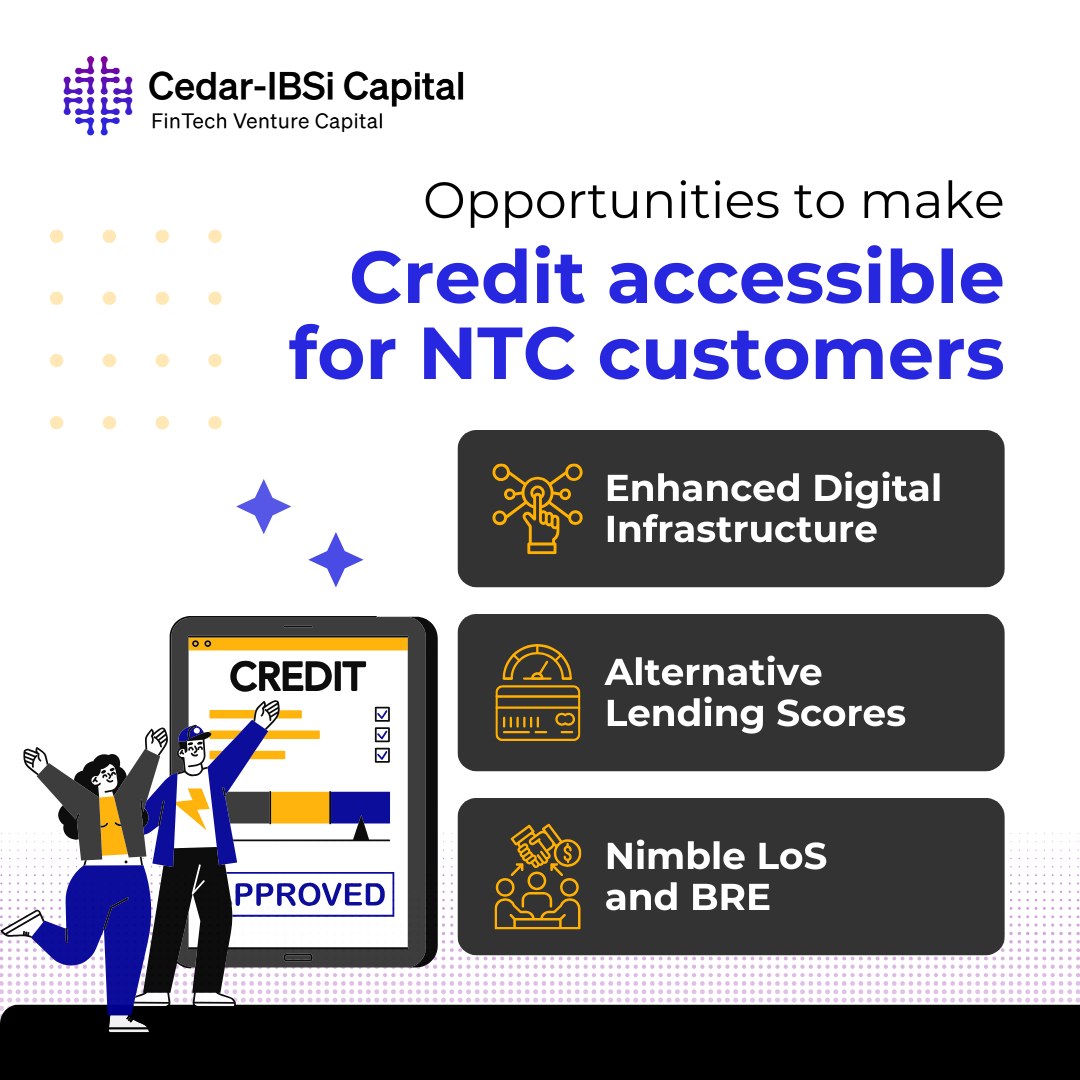February 25, 2025
Digital lending in India has witnessed a meteoric rise, with projections suggesting a growth from ₹21.6 trillion (~US$ 263.4 billion) in FY22 to ₹47.4 trillion (~US$ 578.0 billion) by FY26, according to a report by the Digital Lenders Association of India (DLAI). This explosive growth, while presenting numerous opportunities, also brings forth significant challenges that restricts access to formal credit by New-to-Credit (NTC) customers across B2C and B2B segments.
Lenders and LSPs need to unlock ways to add NTC customers within both segments to achieve the growth sustainably and lay down foundation for future business. However, it is easier said than done, as NTC customers, face challenges across the entire journey – application, approval requirements, and management stages, characterized by barriers such as inadequate credit histories, stringent compliance requirements, and complex repayment dynamics.
Challenges/ Hurdles:
- Credit History and Scoring:
- Credit Score and thereby history has become the base line to arrive the ‘intent to pay’. Hence its absence for NTC customers complicate the ‘intent’ assessment. Without traditional credit scores, lenders must rely on alternative data, expanding the risk perception of a NTC customer.
- Collateral Requirements:
- Lenders often see collateral as way to lower the ‘perceived’ high risk of NTC customer. However, they may not possess sufficient collateral to secure loans, limiting their borrowing options and pushing them towards higher-cost unsecured credit from informal and unregulated entities.
- Documentation and Compliance:
- Potential borrowers frequently struggle with the extensive documentation required for loan applications, which can be daunting and discouraging, particularly for non-salaried individuals and/or MSMEs.
- MSMEs often encounter delays due to inadequate financial documentation complicating and prolonging the approval process.
- High Interest Rates:
- Due to the higher perceived risk, lenders often impose elevated interest rates on loans to individuals without a credit history, making borrowing costly and less accessible.
- Loan Size and Terms:
- NTC customers are typically offered smaller credit lines with less favorable loan terms, which may not meet their actual needs and financial situations.
- Financial Literacy:
- Many a times, lack of financial literacy becomes a significant barrier for a NTC customer. Many are not well-informed about credit management, the implications of debt, and how to make strategic financial decisions.
- Digital Divide:
- Access to credit via formal institutions is uneven, with significant segments of the population, lacking the access because of knowledge and/or technology.
- Operational Constraints:
- Consumers often face difficulties meeting lenders’ operational requirements, which can vary widely and be inflexible.
- Collection and Recovery:
- The inefficiencies of the legal system and costly arbitration options make debt recovery challenging, especially post-pandemic with stricter recovery norms impacting the disbursement of unsecured loans.

Opportunities to make credit accessible for NTC customers:
- Enhanced Digital Infrastructure: Using all components of India Stack can help streamline loan disbursement and management processes, making credit more accessible.
- Alternative Lending Scores: Psychometric profiler to ascertain ‘intent to pay’ and/or derive ‘probability of default’ using wide array of location-wise publicly available macroeconomic data variables.
- Nimble LoS and BRE:To design segment focused workflows and decision engine rather than applying traditional models to all segment.
Conclusion:
The lending landscape in India, while ripe with opportunities, presents several challenges that must be navigated carefully. By addressing these issues collaboratively and by leveraging innovative technologies, flexible lending models, India can close the significant credit gap and foster inclusive economic growth.

